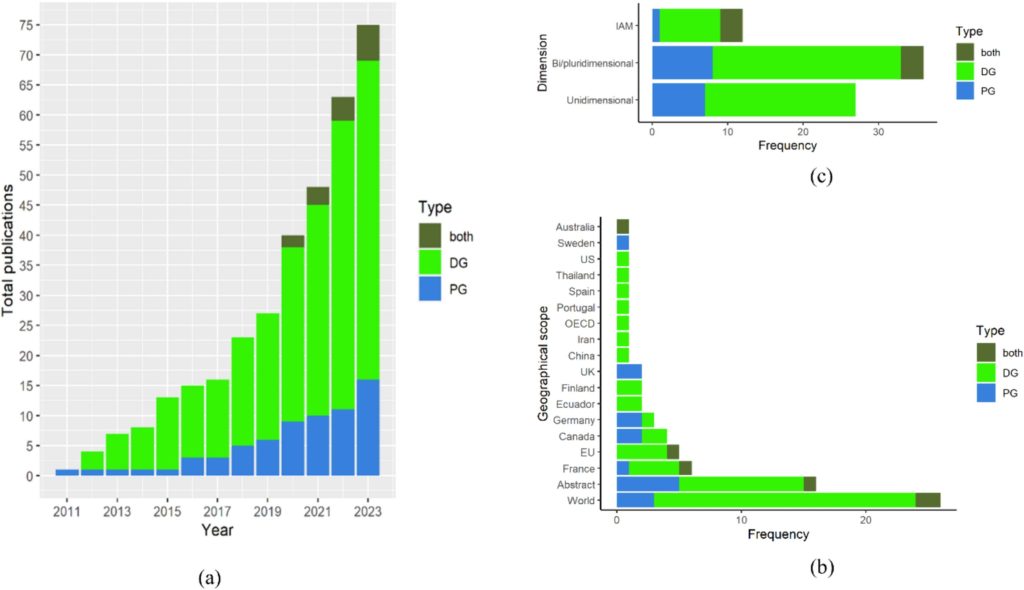Members of GEEDS have recently published a paper that conducts a systematic literature review analysing 75 peer-reviewed papers based on the results of modelling De- or Post-growth (DG/PG) scenarios. The field of DG/PG modeling is small but rapidly expanding, and we found it displays a great diversity (Figure 1). The paper examines key aspects like geographical scope, dimensions modeled, and techniques applied in these models. It links model structures to various theoretical debates, such as the relationship between DG/PG and GDP and the socio-economic metabolism, the (un)intentionality of the degrowth process, the compatibility of DG/PG with capitalism, key actors of the transition, and the selection of suitable policies for a DG/PG transition.

The paper links with efforts of the group in defining and implementing DG/PG scenarios in its models, with GEEDS already having a notable track record of published DG/PG scenario results from the WoLIM and MEDEAS models. Preliminary results of this work have been presented at the ESEE-Degrowth conference 2024 in Pontevedra. A Financial Times article citing this work underscores the timeliness and growing relevance of degrowth discussions in political and media spheres.
Firstly, a certain ambiguity is identified in the definitions of DG and PG used by the modeling studies, although some convergences are noted. A key finding is that most models portray DG/PG as intentional transition and do not question its compatibility with a capitalist system. More radical strands of the DG/PG discourse such as those that reject capitalism and advocate networked bottom-upwards forms of economic development are excluded. The models frequently consider policies like working time reduction, carbon taxes, maximum income caps, and universal basic income, but cover only a small fraction of theoretical DG policies. At the same time, the reviewed studies have a merit in demonstrating the importance of integrating biophysical constraints in economic modeling and in quantitatively assessing the feasibility of environmental integrity and social well-being without growth.
Future modeling efforts could focus more on the Global South, introduce heterogeneous agents driving sustainability transitions, include multiple planetary boundaries, and represent a wider range of sustainability policies.
Reference:
Lauer, Arthur, Iñigo Capellán-Pérez, y Nathalie Wergles. «A comparative review of de- and post-growth modeling studies». Ecological Economics 227 (1 de enero de 2025): 108383. https://doi.org/10.1016/j.ecolecon.2024.108383.
Arthur Lauer



